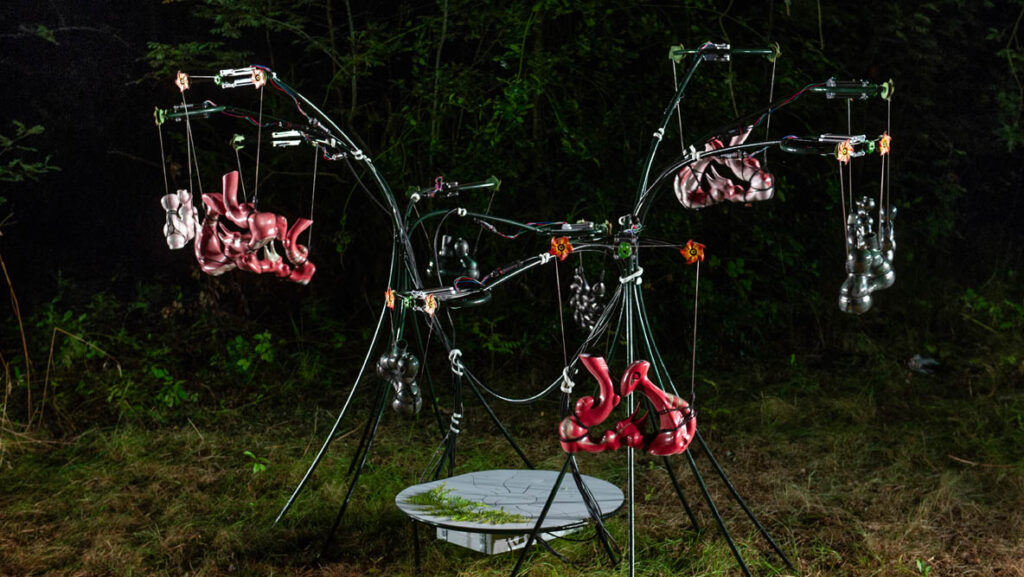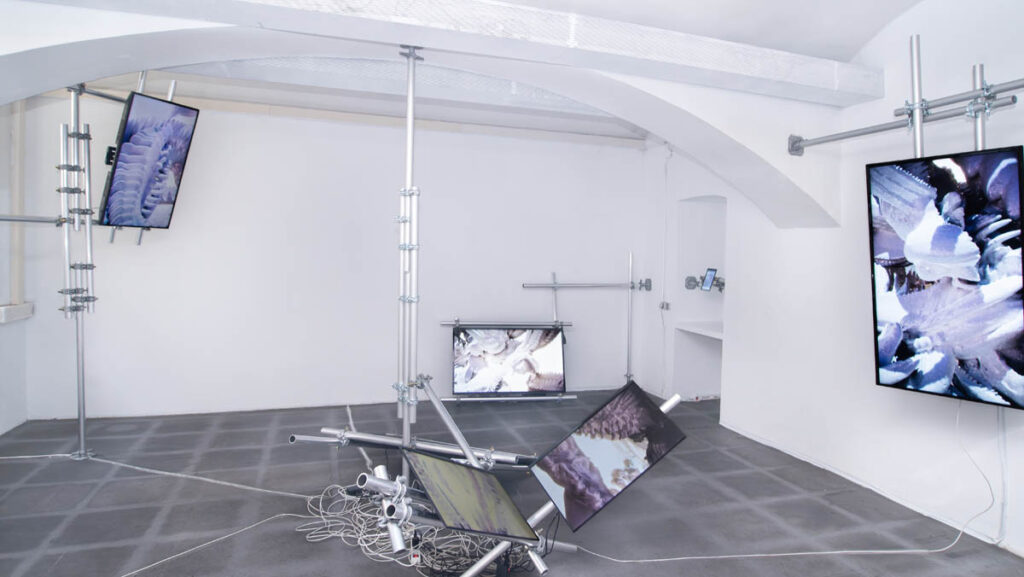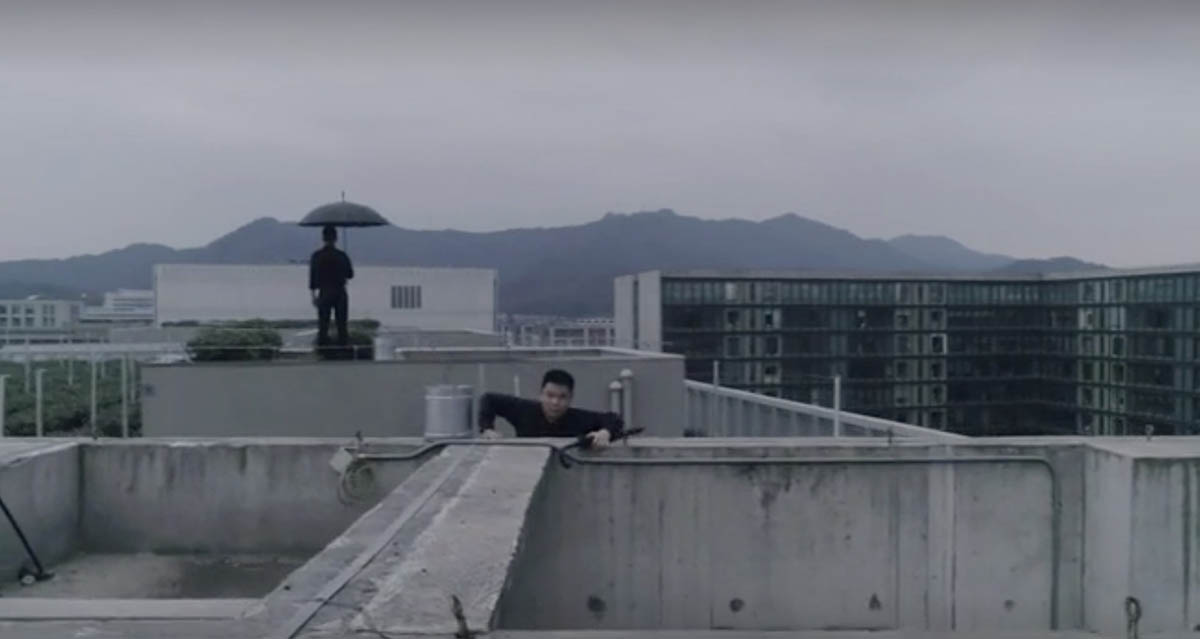
During completing his project from Goethe Institute in Munich Cao Shu is coming to visit the BMCA family for the projection of four of his video works and an artist talk. His oeuvre is usually evolving multimedia installations, objects manifesting different ways of seeing, or through videos stimulating rooms where real footage and virtual spaces are difficult to distinguish. His video works take us to a new point of view, opening our conscience and giving us an idea of the world „behind the big wall“.
Yi Lian is spending a longer time period in Vienna. While working on a new project he is eager to introduce some of his recent works. While three large-scale photographic works were shown in his exhibition at Loft 8 Galerie in May 2023, the audience can experience a video which is illustrating the same „impossible“ focus on local spots during the night. Yi Lian is virtuosely serving himself with a wide variety of techniques. Recently we can observe a fantastic series of Ipad Drawings on his Instagram account. As a very convenient way of working, Yi Lian is using his tablet especially during times of travelling. During a studio visit in 2022, the 1987 born artist showed glass objects next to ceramique works to curator Alexandra Grimmer.
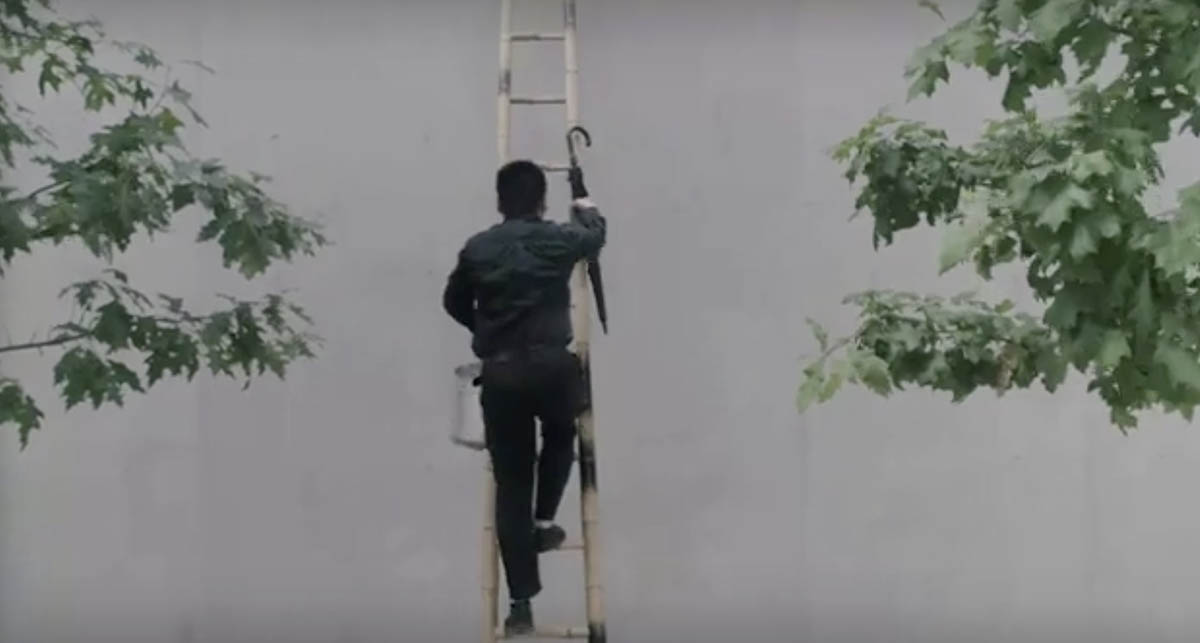
The work was commissioned by the BY ART MATTERS, and the framing was taken in Hangzhou Tianmuli. The artist draws inspiration from the perspective of a security guard (a rural migrant worker in the city), the daily maintenance worker of the building. Inspired by the security guard’s collective effort to repair a leak after a heavy rainstorm, the artist photographed a security guard carrying an iron bucket and an umbrella roaming around in different spaces, making use of spatial changes to explore and present the complexities of urban and rural, present and past, memories and experiences during the period of rapid development of China’s urbanization (from 1978 to present).
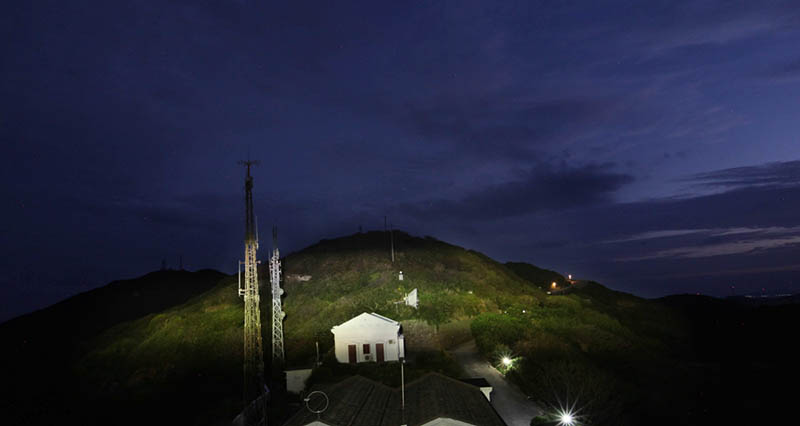
A lighthouse built by the British in 1870 to guide ships has been shining 360° in the East China Sea in the Pacific Ocean for 150 years, and half of the time the lights have been thrown inefficiently towards the mountains behind the lighthouse. The artist pondered what was illuminated by the light that kept appearing and fading into the mountains and forests all night for 150 years. More than 4,000 image sequences were taken with different shutter speeds and frequencies throughout the night, connecting the moments when the mountains were illuminated into continuous time streams, forming a unique light show of the mountains at night by the sea, while also responding to the night and light in the past 150 years.
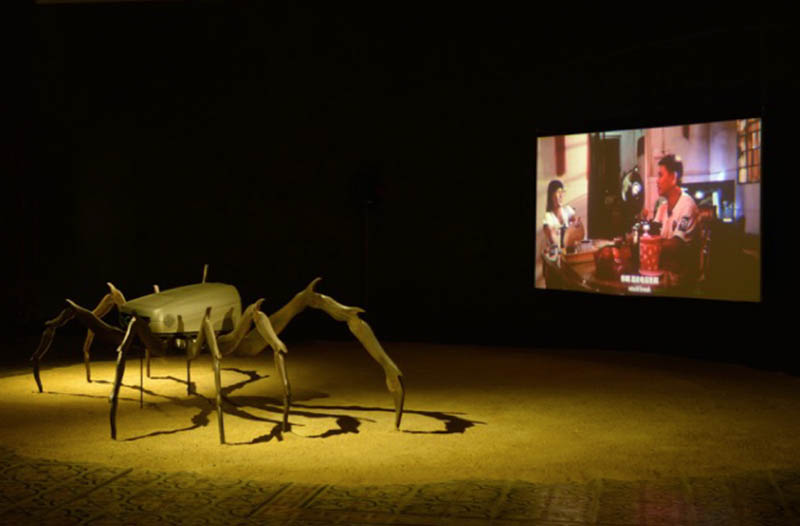
The background of the work comes from a friend of the artist, whose family operated a video hall in Yangjiang, Guangdong for more than ten years. In the 1980s and 1990s, such video halls were very popular in many small and medium-sized cities in China, becoming the first choice for locals and migrant workers to spend their leisure time. With the development of technology and economy, large cinemas were established and small video halls gradually disappeared. The artist visited the families that used to run video halls, and used an old three-gun projector imported from Italy as the body of a gigantic crab installation, projecting images of memories related to video halls, linking up a piece of family memories, and attempting to reconstruct the phantom of a bygone era.
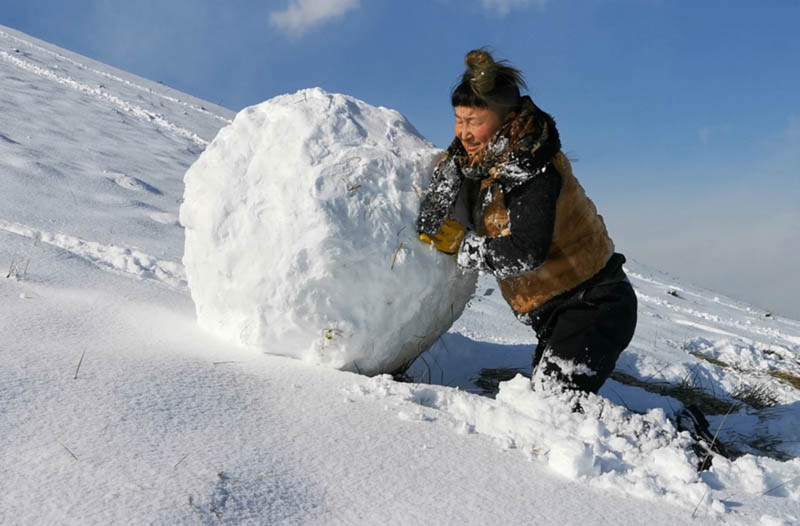
Taking into account the characteristics of the park and its historical background, the artist invited Umi, the manager of the resident organization S-AIR, to take part in the exercise of pushing a rock up a hill in imitation of Sisyphus, and truthfully recorded the many „failure“ experiences of the participant and the „failure“ of pushing a snowball up the hill, exploring the individual’s life experience of daily and eternal, meaning and absurdity.
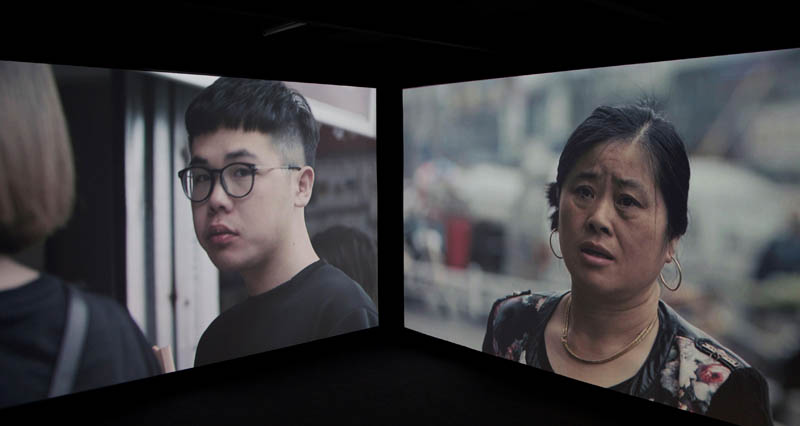
For this double screen hd video, the artist set up the camera in the streets of Hangzhou, focusing on people passing by: workers, students, young office workers, the boss of a restaurant or elderly people sitting near-by. Once his subjects became aware of the camera, the moving image freezes to a picture and another encounter process starts. There is a feeling of longing for more and an instant rhythm of fast pace of life. The moment when their eyes meet with the lens (which might be a collision for them) is the moment of meeting the audience. The emphasis is that it is at the moment that the work and the audience really meet.
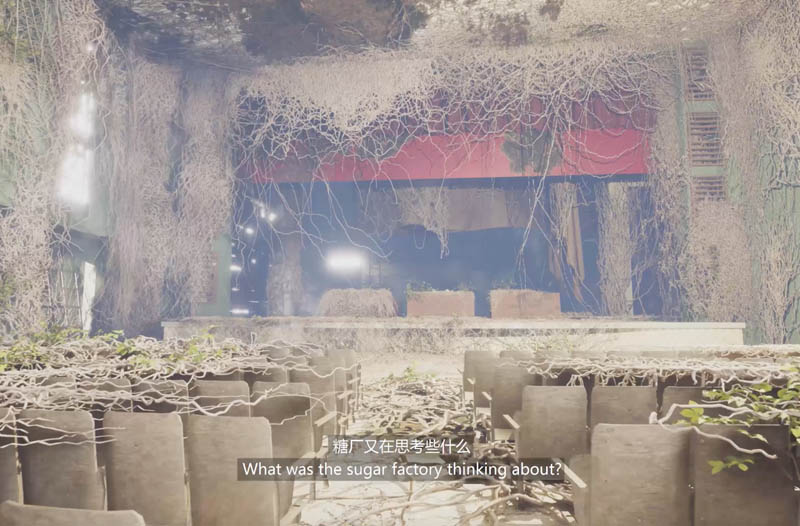
The work revolves around the Shunde sugar factory in Guangdong, China. Based on this sugar factory, the work uses images created through a combination of actual filming and game engine rendering. The old sugar factory, equipped with Czech industrial assembly lines, once experienced the glory of China’s industrialization but has now become a ruin in today’s era of globalized high-frequency trading. The cultivation and industrialization of sugar, along with global futures trading, are referred to as „Phantom Sugar“ in the futures field due to the unpredictability of its value. The value of sugar itself is also a killer of the „ecosystem“ of sugar factories.
The work explores topics such as swarm algorithms, future agriculture, Laplace’s demon, and humanity’s obsession with predicting and controlling behavior. In ancient China, including records in Sima Qian’s „Records of the Grand Historian,“ there are numerous accounts of using sugar to guide the walking patterns of ant colonies to predict the future and alter history. Classic ant colony algorithms are also present in AI neural networks, used to simulate blueprints for the future.
Laplace’s demon, perhaps taking the form of a mosquito swarm, is a super-individual life form persistently attempting to simulate blueprints in the era of quantum mechanics. As the grand blueprint of dataism unfolds, there is a recursive misalignment with the unpredictable elements of daily life.
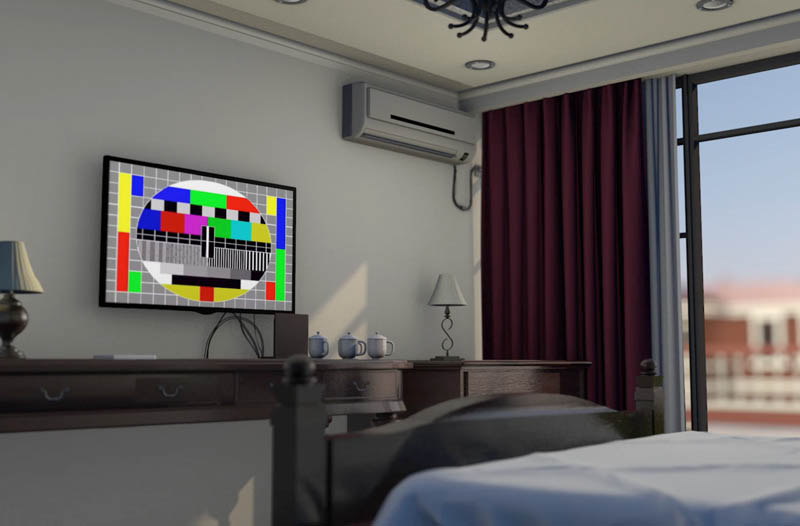
In the visual installation „Infinity and Infinity Plus One“ within the „8“ shaped installation, the main screen images are created through a combination of 3D rendering and live footage. The content of the work revolves around a seaside fable narrated by a Chinese official contemplating a mathematical problem. The film refers Hilbert’s mathematical problems. Faced with infinite rooms on a solitary island, what choices will the suddenly visiting guest make in this guesthouse that was once filled with Chinese officials? Scenes in the film include a silent conference table in ruins, teacups engaged in mechanical repetition for dialogue, and scenes reminiscent of the display of power discourse.
In a certain infinitely extended time, infinity and infinity plus one are considered equal. Perhaps this is the enormous gap between the world of ideas and the real world, and also the reason why reality is continuously led towards tragedy by the world of ideas. In the film, the author starts with a specific location and expands into an expression of the issue of time—how time is shaped into a specific system by some form of will through different visual forms. Through roaming shots, the film alternates between live scenes and 3D modeling-rendered spaces, leading to the meeting room at the end of the corridor. In the other seven channels outside the main screen, different positions are played in a loop through surveillance, revealing everything happening in this guesthouse. The presentation of multiple perspectives in the spatial installation breaks the synchronicity created by the continuous shot of the main screen. The voiceover in the film is narrated in the local dialect by a local resident.
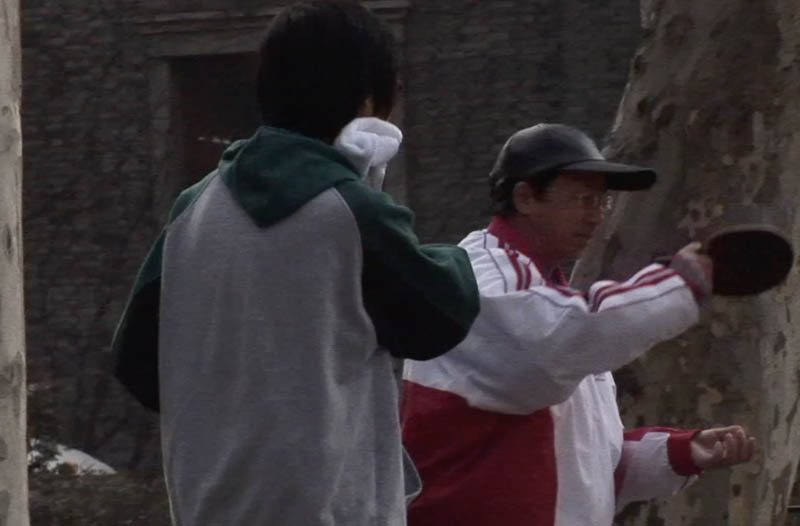
On a busy road during rush hour, two people stand on each side of the road playing Ping-Pong, trying to make it by hitting the ball to the other side. The movement of the two players seems to have “nothing to do with” the cars on the road, whereas they maintain a subtle yet restrictive relationship.
Video Screening & Artist Talk: Yi Lian 易连 & Cao Shu 曹澍
Location: Atelier Suterena, Esteplatz 8 (Eingang Geusaugasse), 1030 Vienna
November 29, 17:00: Cao Shu 曹澍 | November 30, 19:00: Yi Lian 易连
Yi Lian 易连 – www.bmca-art.com/yi-lian
Cao Shu 曹澍 – www.bmca-art.com/cao-shu
Blue Mountain Contemporary Art (BMCA) is a collection of contemporary Chinese art. Since its foundation by the philanthropist and art supporter Ofer Levin in 2013, BMCA has defined itself as part of China’s dynamic art scene. The BMCA team maintain close contact with its artists and focus on works that critically engage with their time and surroundings. The aim is not to witness passing trends but to acquire and cultivate unique works with a long-term impact. Since the BMCA Collection moved its headquarters from Beijing to Europe, the focus has been on making its works visible in international projects. The continuous presence of current Chinese contemporary art in an international context is as important as „Capturing the Moment in China“, which has been BMCA’s credo since the beginning. Numerous exhibition projects at various venues in China, Israel and Europe preceded over the past nine years and form the basis of the BMCA Collection, which also sees itself as a project platform. www.bmca-art.com



